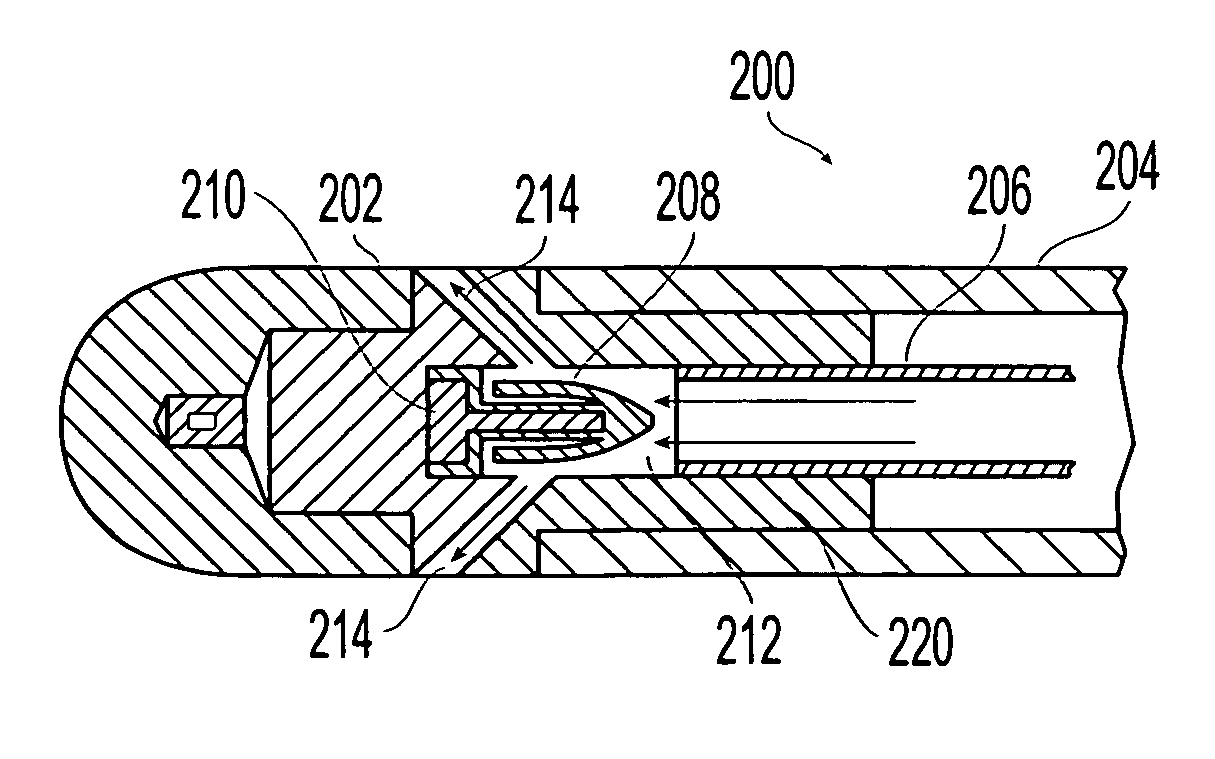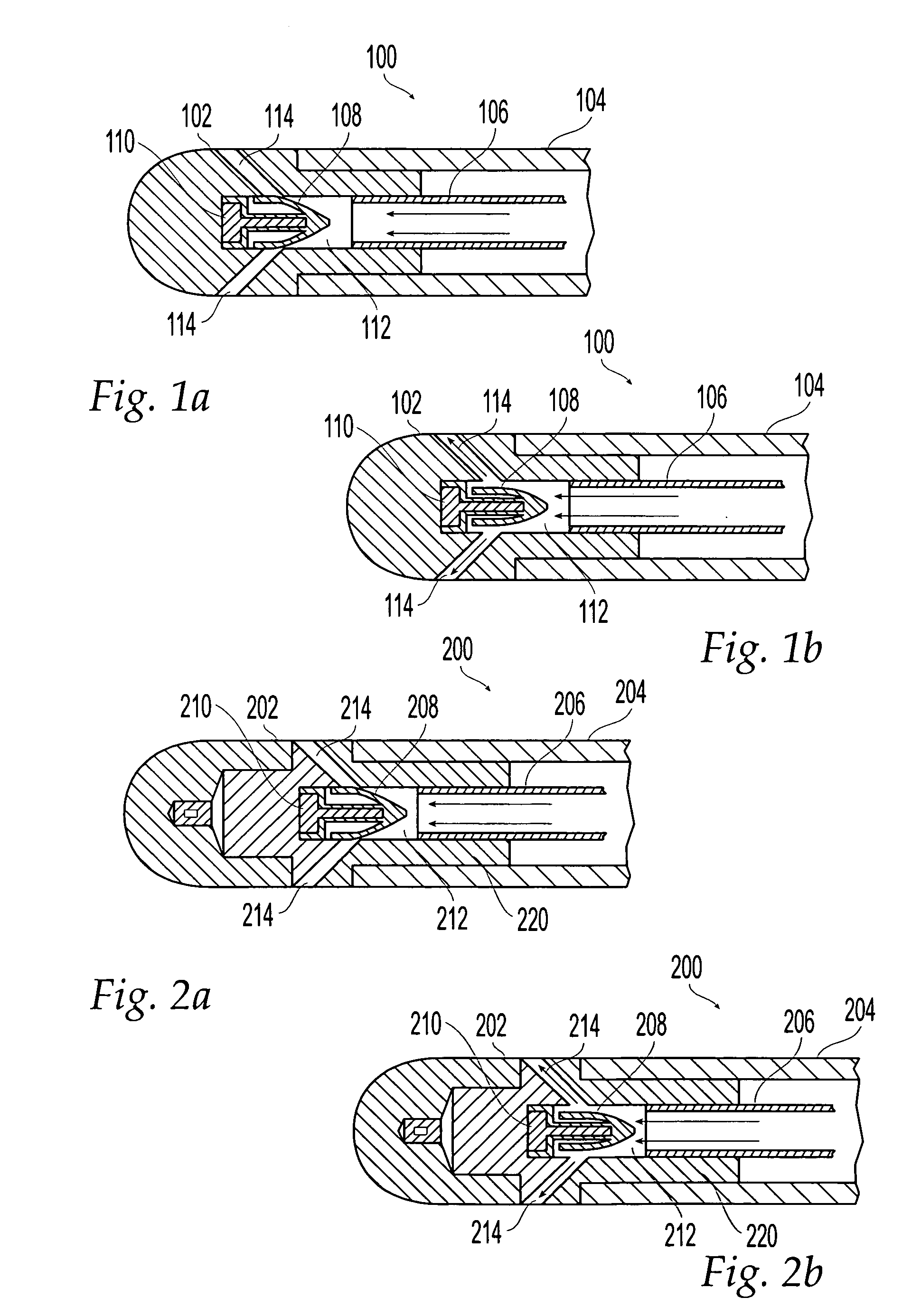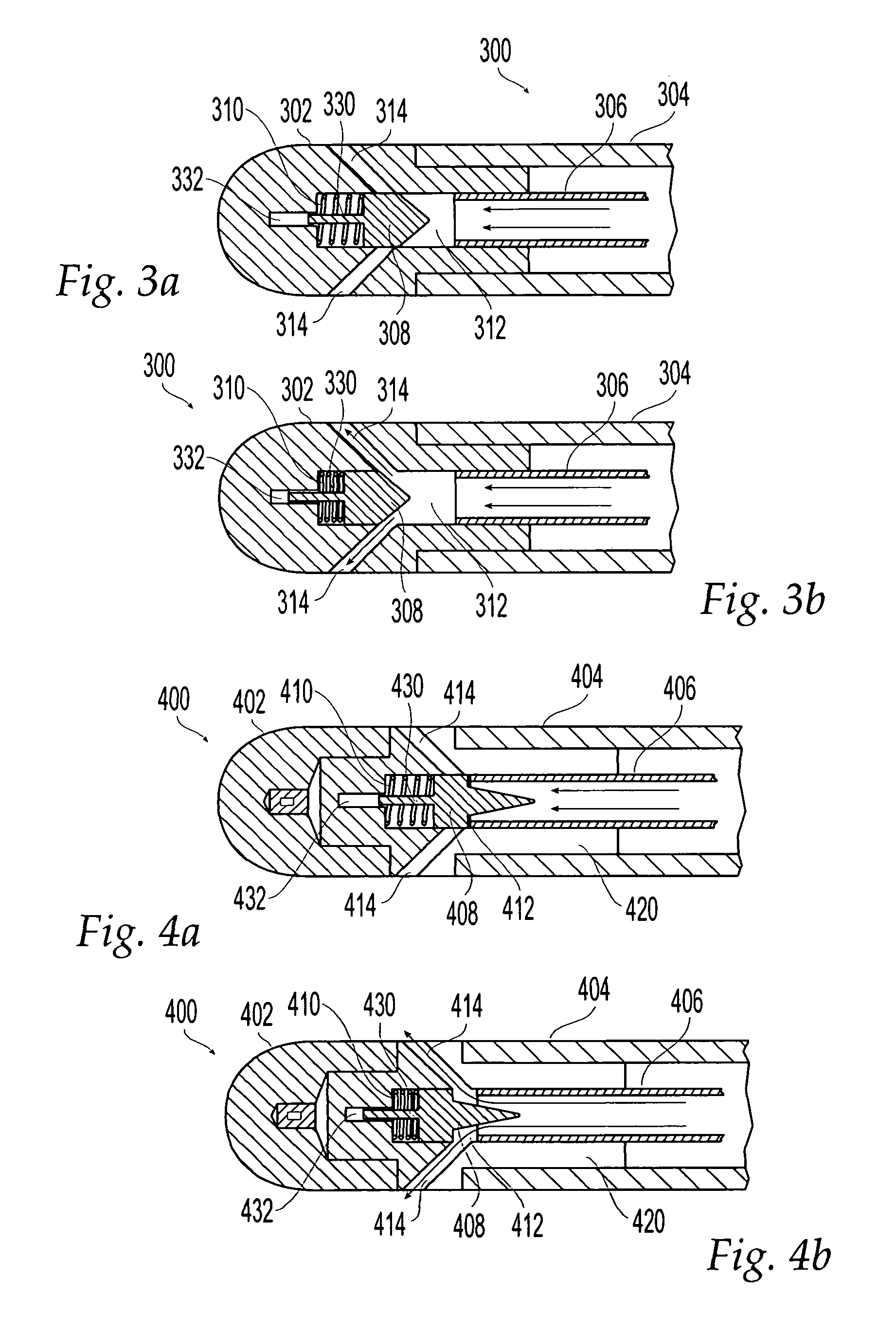Irrigated ablation catheter having a valve to prevent backflow
a technology of irrigated catheter and valve, which is applied in the field of catheters, can solve the problems of significant patient discomfort, varying levels of congestive heart failure, and stasis of blood flow, and achieve the effect of preventing blood backflow
- Summary
- Abstract
- Description
- Claims
- Application Information
AI Technical Summary
Benefits of technology
Problems solved by technology
Method used
Image
Examples
Embodiment Construction
[0063]Several embodiments of an irrigated ablation catheter having a valve to prevent backflow are depicted in the figures. As described further below, the irrigated ablation catheter having a valve to prevent backflow according to the present invention provides a number of advantages, including, for example, reducing delivery of saline to a patient's bloodstream and reducing blood clotting inside the catheter.
[0064]FIGS. 1(a) and 1(b) are cross-sectional views of the distal end 100 of an irrigated ablation according to one embodiment of the invention. The distal end 100 comprises an electrode 102, a catheter body 104, a fluid tube 106, a valve element 108, and a valve element support core 110. Electrode 102 includes an inner cavity 112 which houses valve element 108 and valve element support core 110, and a plurality of through holes 114 from the inner cavity 112 to the exterior of electrode 102.
[0065]Valve element support core 110 may be made of any stiff material and offers struc...
PUM
 Login to View More
Login to View More Abstract
Description
Claims
Application Information
 Login to View More
Login to View More - R&D Engineer
- R&D Manager
- IP Professional
- Industry Leading Data Capabilities
- Powerful AI technology
- Patent DNA Extraction
Browse by: Latest US Patents, China's latest patents, Technical Efficacy Thesaurus, Application Domain, Technology Topic, Popular Technical Reports.
© 2024 PatSnap. All rights reserved.Legal|Privacy policy|Modern Slavery Act Transparency Statement|Sitemap|About US| Contact US: help@patsnap.com










